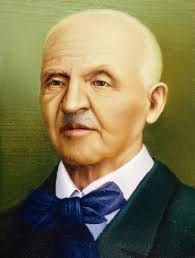The History of Anton Bruckner’s Symphony No. 9 in D Minor
Anton Bruckner’s Symphony No. 9 in D Minor stands as one of the most profound and enigmatic symphonic works of the late Romantic period. Left unfinished at the time of his death in 1896, the symphony represents the culmination of Bruckner’s spiritual and artistic journey—an awe-inspiring testament to his devout faith, monumental ambition, and deeply personal expression.
A Late-Life Masterpiece
Bruckner began composing his Ninth Symphony in 1887, shortly after completing his Symphony No. 8. At this point, he was already well into his sixties and experiencing declining health. Yet, despite growing physical limitations and the long shadow cast by his earlier works, Bruckner saw the Ninth as the crowning achievement of his symphonic output. He dedicated it “To the beloved God,” underscoring its spiritual significance.
The composer worked on the symphony until his final days. Although he completed the first three movements—Feierlich, Misterioso (Solemn, Mysterious), Scherzo – Bewegt, lebhaft (Animated, Lively), and Adagio – Langsam, feierlich (Slow, Solemn)—he died before finishing the intended fourth movement. At the time of his death on October 11, 1896, he had drafted significant material for the finale, but it remained incomplete.
The Unfinished Fourth Movement
The absence of the fourth movement has long been a point of fascination and debate among musicologists and performers. Bruckner intended the final movement to mirror the grandeur and spiritual resolution of his previous symphonies, particularly the Fifth and the Eighth. However, due to his deteriorating health and obsessive revisions to earlier symphonies, he never finalized the last movement.
Some early performances substituted the Te Deum—a choral work Bruckner once considered a possible finale—as a makeshift ending. In recent decades, scholars and musicians have attempted to reconstruct the fourth movement based on surviving sketches, most notably the versions prepared by musicologists such as William Carragan and Nicola Samale. These efforts have led to fascinating performance options, but many conductors still choose to present only the completed three movements.
Musical Characteristics
The Ninth Symphony is quintessentially Brucknerian: vast in scale, deeply spiritual, and architecturally complex. The first movement unfolds with a sense of cosmic mystery, building gradually from haunting silence to colossal climaxes. The second movement, a rugged and relentless scherzo, is filled with rhythmic tension and elemental power. The third movement, the Adagio, is often regarded as one of the most moving pieces Bruckner ever wrote—an emotionally charged meditation on mortality that feels almost like a farewell.
The symphony’s harmonic language pushes the boundaries of tonality, often venturing into ambiguous or dissonant realms. Its orchestration is rich and sonorous, exploiting the full range of the late Romantic orchestra. Brass and strings are used to majestic effect, and Bruckner’s characteristic pauses and dynamic contrasts evoke a sense of timelessness and spiritual searching.
First Performances and Reception
The premiere of Symphony No. 9 took place on February 11, 1903, in Vienna, conducted by Ferdinand Löwe. For this performance, Löwe made several editorial changes in an attempt to make the music more accessible—alterations that were later reversed as Bruckner’s original intentions gained recognition.
Today, the Ninth Symphony is widely regarded as one of Bruckner’s greatest achievements. Despite—or perhaps because of—its incomplete nature, the work resonates deeply with audiences. The profound emotional journey through the first three movements often leads listeners to accept the unfinished state as part of the symphony’s identity, enhancing its mystique and poignancy.
Legacy
Bruckner’s Symphony No. 9 in D Minor is more than just the final work of a great composer—it is a spiritual testament. Written with the humility and devotion that characterized Bruckner’s life, the symphony reaches toward the divine in a way few compositions ever have. Its incomplete status only heightens the sense of mystery and transcendence that permeates the music.
As scholars continue to explore and reconstruct what might have been, the Ninth Symphony remains a towering monument to human faith, perseverance, and artistic vision. It invites us to listen not just with our ears, but with our souls.


Comments are closed